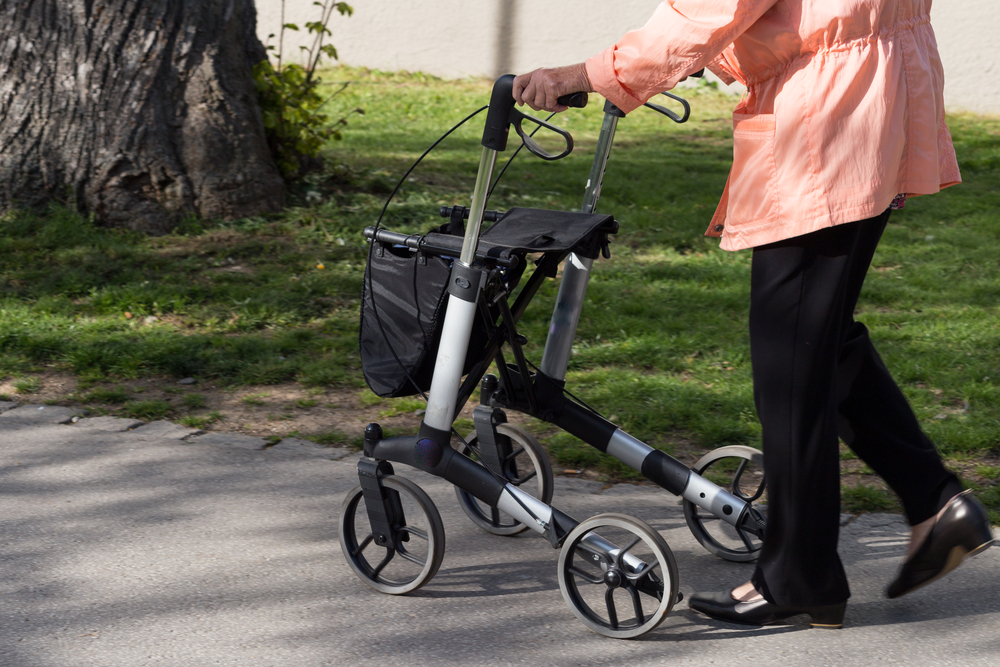The ALS Workaround Dilemma

If you’re like me and live with ongoing physical changes from ALS, you’ve probably used workarounds.
What is a workaround?
A workaround is a creative, temporary solution that solves an everyday problem. For example, in the real world, folks put red duct tape over a broken tail light or use a safety pin to replace the missing screw in the hinge of a pair of glasses.
In the world of ALS, creative solutions go way beyond duct tape and safety pins. We employ Velcro, bungee cords, pillows, rolled-up towels, and repurposed items. Photos show up in ALS Facebook groups of car wash mitts used for wheelchair foot pads, cellphones attached to walkers, and women’s tube tops used to protect PEG (feeding tube) sites.
The problem is, our workarounds often seem to do so well that we put off finding permanent solutions — and that can lead to unsafe situations.
More than once I’ve seen rollators repurposed into makeshift wheelchairs (a safety no-no).
For me, a workaround has to pass my rule of three questions:
- Is it reasonable?
- Is it rational?
- And, most importantly, is it safe?
Sometimes a workaround is the result of an unconscious denial that our symptoms are getting worse. Or we’re not listening to those around us who see what we’re doing and offer good alternatives. Or it’s not a product at all, but the way we do something.
My first workaround
When I was dealing with the initial ALS symptoms that hindered my ability to walk, I “invented” a workaround (one that I’m sure others have tried as well).
I would walk through the house with one hand on the wall to steady me. Where there was no wall, I grabbed the back of a chair, then grabbed another, then onward to the kitchen countertop and so on. It was a lurching movement that over time became graceful. Or so I thought.
What I was doing was certainly not reasonable, rational, or safe.
In fact, a couple of near-falls convinced me to listen to my husband and my ALS clinic staff and learn to walk with a rollator. That first rollator increased my mobility so much that I now own three: one in the house, one on the back porch, and one in the car.
If you rely on workarounds, here are a few of my tips:
- Talk to your caregiver, family, or a friend and ask them to be on the lookout for you. Ask them to be that special person who pulls you aside and suggests a better, safer solution.
- Check with your local ALS Association; their medical equipment loan closet might have just what you need, eliminating the requirement to invent a workaround in the first place.
- Ask yourself the three questions. Is this workaround reasonable, rational, and safe?
We all use workarounds. They’re easy, quick, and often the perfect temporary solution to help us to continue to enjoy and engage in activities.
But remember, workarounds are temporary. Always look for the safer and more permanent solution. By doing so, you’ll be on your way to learning to live well while living with ALS.
***
Note: ALS News Today is strictly a news and information website about the disease. It does not provide medical advice, diagnosis, or treatment. This content is not intended to be a substitute for professional medical advice, diagnosis, or treatment. Always seek the advice of your physician or other qualified health provider with any questions you may have regarding a medical condition. Never disregard professional medical advice or delay in seeking it because of something you have read on this website. The opinions expressed in this column are not those of ALS News Today or its parent company, Bionews Services, and are intended to spark discussion about issues pertaining to ALS.








Leave a comment
Fill in the required fields to post. Your email address will not be published.